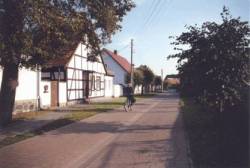
Blumenhagen
The village "blomenhagen", mentioned in 1265 and belonging to the bailiwick Vierraden in Pomerania, is as old as Schwedt. Wendish settler wrestled farmland from the Pomeranian heath, used the forest for the building of clay half-timbered houses. Strategic located at the crossing of Welse and Oder, the village was again and again involved in warfare, with plundering, pillage and murder. Blumenhagen was totally 'wrecked' after the 30-year War. Only three families survived, who then wanted to 'cultivate again'. With the Potsdamer Edict French settler came in the village. They recognised that climate and soil were optimally suited for tobacco growing. Well preserved tobacco storehouses form apart from old farmhouses and new homes the picture of a young village. From a population of 245, 70 are children. And so the children's festival with Taubenabwerfen (pigeon dropping) as well as the putting up of the maypole unites all Blumenhagen citizens when they celebrate.
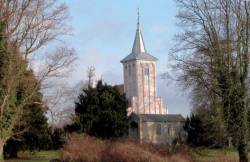
Criewen
The old Slavic fishing village at the Alten Oder, first mentioned in 1354 changed often its owner. 1816 brought a change when the Arnim family bought the estate. They pulled down the old crofts apart from the stone church built in the 14th century. Lenné created in this spot an estate park in English style in front of the new palace. The village was rebuilt further east. Bernd von Arnim, later Prussian minister for agriculture, founded a significant seed growing business. The estate was divided in 1945 into 18 new farms. Then a public estate for animal breeding, a seed growing business and until 1998 a LPG was there. Today the Schwedter village with 549 inhabitants and active club life houses the administration of the National Park Unteres Odertal with interesting museum and is starting point for eventful walking routes. The renovated palace, a German-Polish meeting place houses the Brandenburg Academy Criewen.
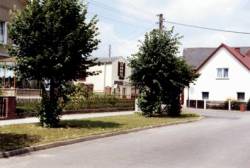
Gatow
The name of the fishing village comes from the Slavic "gotow", which means 'ready' or 'prepared'. A place ready for settlement, forest and meadows, fertile land and fish rich waters. Mentioned first 1347, the inhabitants lived from fishing, crop farming, tar burning and later tobacco growing, when a war was not raging through the land or high-water destroyed the village. Some well preserved tobacco barns form still today the village picture. Only 16 fishermen lived in the village after the 30-year War, at the end of the 2nd World War three quarter of the houses were destroyed. With Gatow Nord fifty new homes for Uckermärker are being built. They discovered the charm of this delightful place with 205 inhabitants. Because directly at the Hohensaaten-Friedrichsthaler-Waterway situated, is the canal bridge with its resting place a popular starting point for walks and cycle tours into the National Park Unteres Odertal. Any engaged citizens and the auxiliary fire brigade contribute to village life with folk festival in the forest and dance around the campfire.
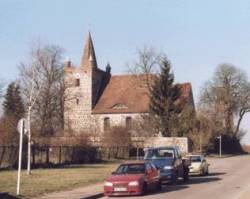
Heinersdorf
The stone church built in the 13th century served the devotion and was since its beginning also refuge for the people of the Angerdorf. Because as all villages near Schwedt was also the in 1313 first mentioned "Henricksdorf" bone of contention between Pomeranian and Brandenburger potentates. The citizens were farmer, plugged away on corn and flax fields. Friedrich II demanded then to 'grow Tartüffel everywhere', as the Uckermärker call noodles. An old legend says the ponds and pools in the surrounding area are the work of giants. The palace was created in 1795 after plans by the state master builder Berlischky. With the land reform the estate of the Earls von Reedern was divided into 50 new farms from those the LPG was created. A turning point came for the rural village at the charming Kavelheide was the building of the petrochemistry in Schwedt. The MVL Mineralverbundleitung Heinersdorf was created and has shaped since then village life. Sports contests and the harvest festival in rural tradition unite annually guests and many of the 715 residents.
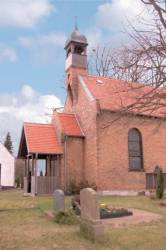
Hohenfelde
Hohenfelde lives up to its name. It is situated surrounded by forests and meadows on the hills from the last Ice Age. First mentioned in 1564 as sheep-farm and farm estate 'uf dem hohen Felde', Graf von Hohnstein ordered in 1612 four day-labourer farms to be built to till the 248 morgen land of the front-fortification of Vierraden and to care for 1003 sheep as well as 58 cattle. The noble owner of the village changed often. Last owner was until 1945 Princess zu Lynar-Reedern. The farmer grew on the fertile fields mostly potatoes, grain and tobacco. Livestock was fed with hey from the polder meadows of the Oder. Later, when craftspeople like smiths, Cartwright and brick burner settled here, the small-scale industry bloomed. Around 1861 part of the 245 residents worked in peat cutting, at tar ovens, at the brick kiln and the distillery of the estate. The village children were taught by the tailor. The children's festival is still today highlight in the life of the 224-soul-village. The old custom of the Taubenabwerfen is still being done. Carved wood pigeons are put on sticks and children try to knock them down with clubs. King is who knocks down the last body. Until the reunification agriculture formed the village by the LPG "Frohe Zukunft" (Happy Future), the Schwedter people moved from prefabricated high-rise buildings into the village and enjoy peace and countryside idyll after the work in the city.
